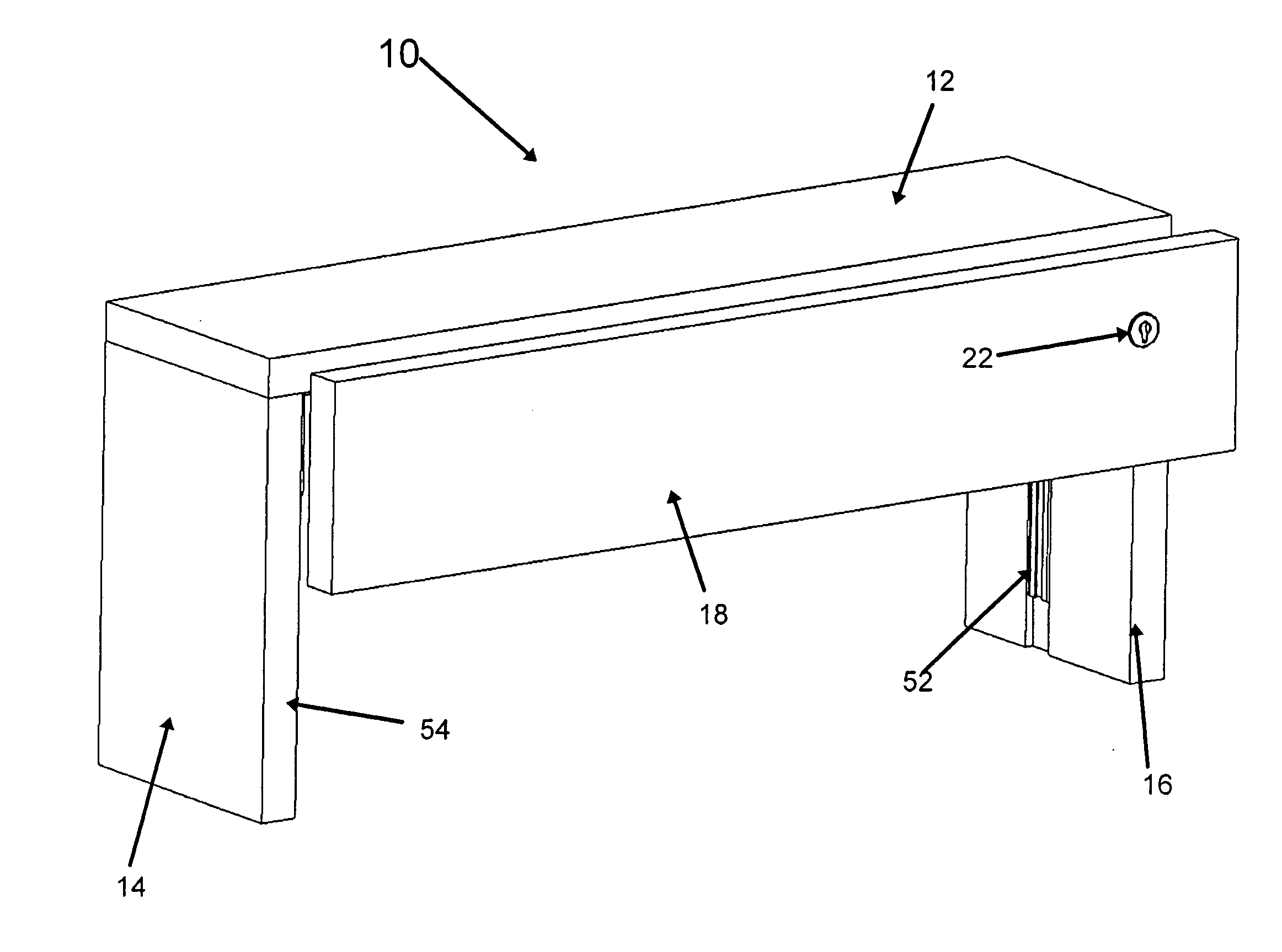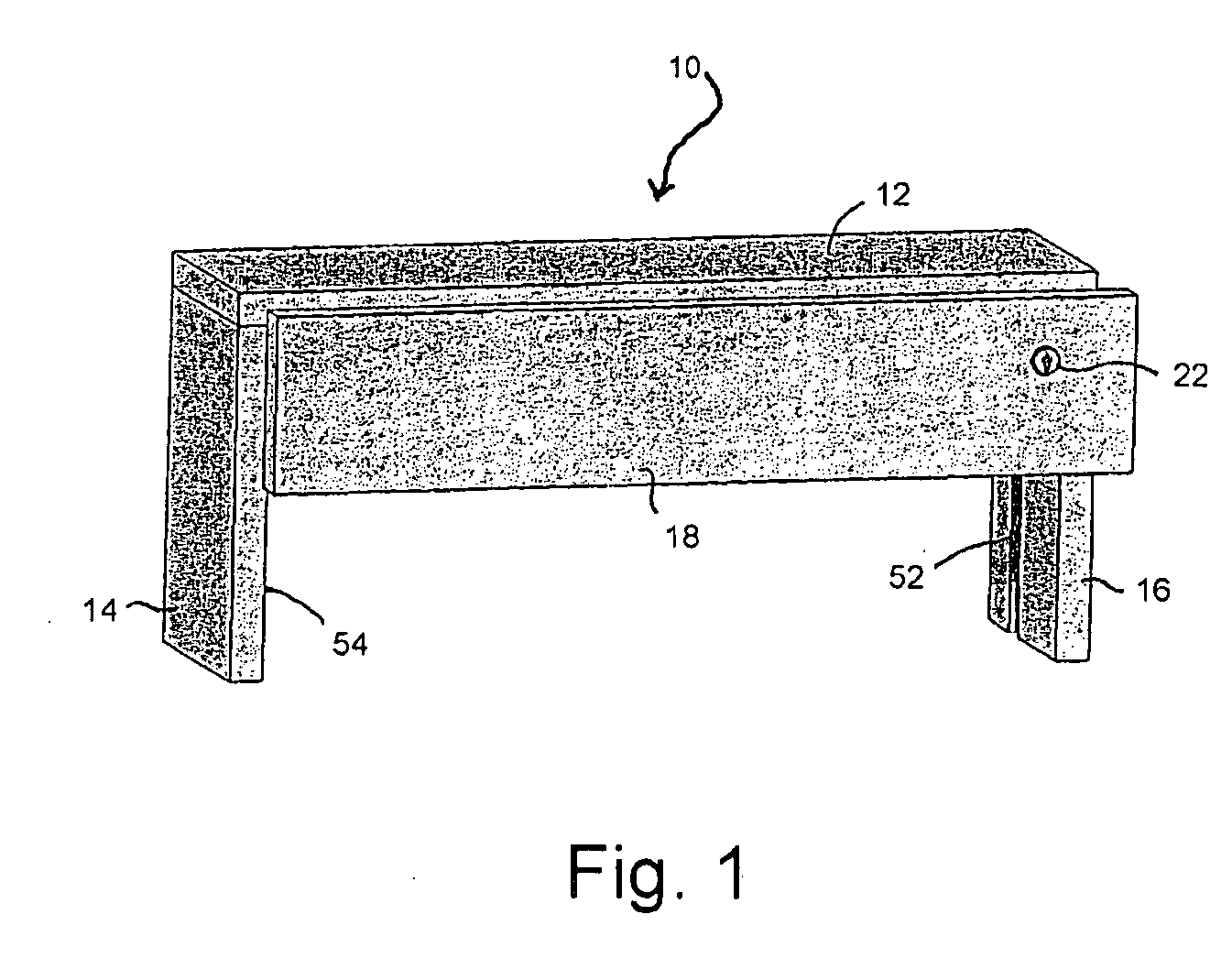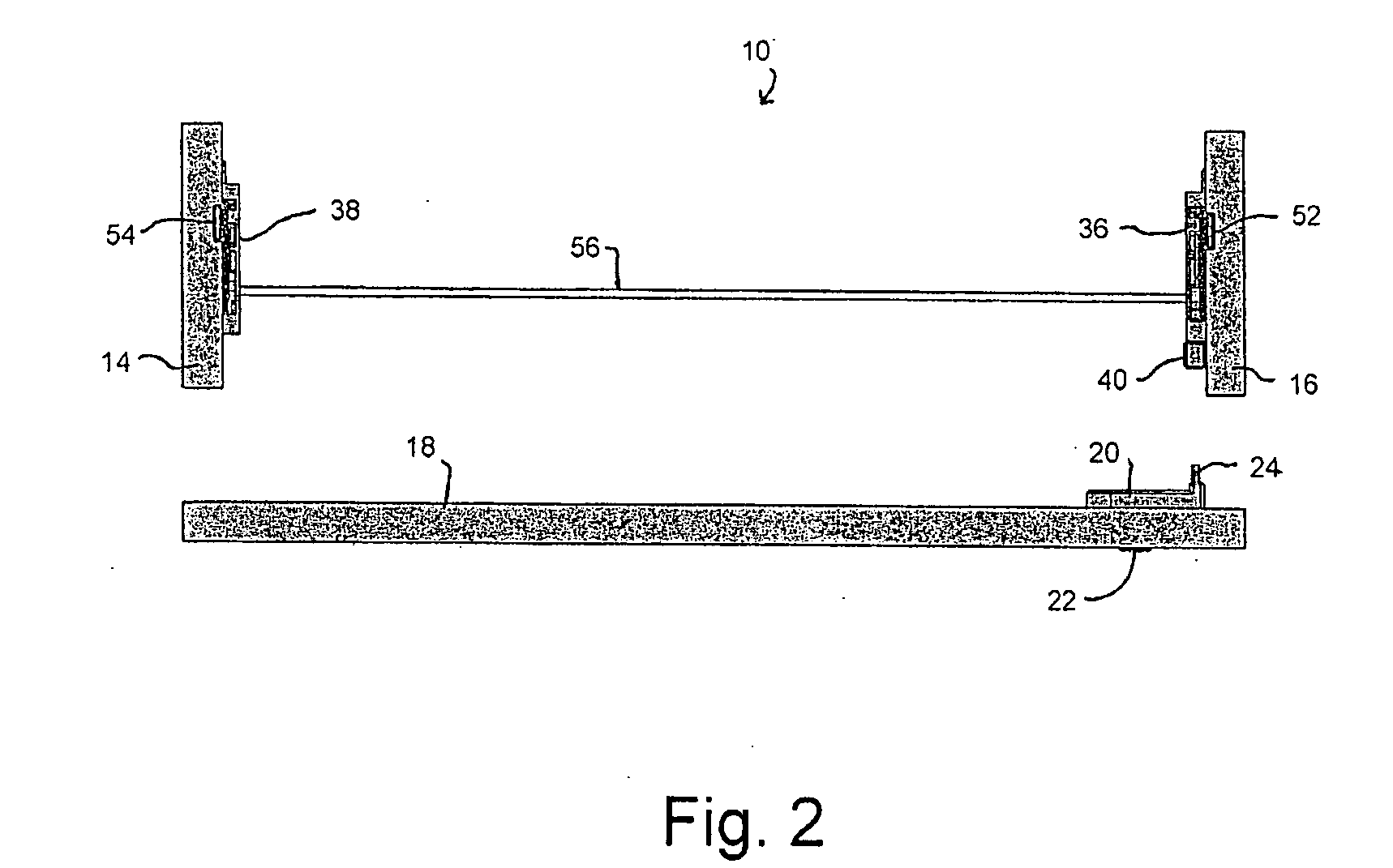Locking system for drawers
a locking system and drawer technology, applied in the field of drawer locking systems, can solve the problems of affecting the security of the file cabinet, affecting the file cabinet, and the locking system of the file cabinet is also susceptible to improper locking by the user, so as to increase the security of items stored
- Summary
- Abstract
- Description
- Claims
- Application Information
AI Technical Summary
Benefits of technology
Problems solved by technology
Method used
Image
Examples
third embodiment
[0051] Reference will now be made in detail to embodiments of the present subject matter, one or more examples of which are illustrated in the drawings. Each example is provided by way of explanation of the present subject matter, and not meant as a limitation of the present subject matter. For example, features illustrated or described as part of one embodiment can be used with another embodiment to yield still a It is intended that the present subject matter include these and other modifications and variations.
[0052] In general, the illustrations of FIGS. 1-7, inclusive, relate to a first present exemplary embodiment of the present subject matter, while the illustrations of FIGS. 8-14, inclusive, relate to a second present exemplary embodiment of the present subject matter. Repeat use of reference characters in the respective embodiments of the respective groups of drawings is intended to represent the same or analogous features or elements of the present subject matter, with onl...
first exemplary embodiment
[0066] Shaft 56 is shown as being in close proximity to exemplary top panel 12. In accordance with the first exemplary embodiment, shaft 56 may be located up to and including 9 / 32 inches from the top panel 12. In accordance with other exemplary embodiments, the distance between the top panel 12 and the shaft 56 may be from ⅛ inch to ½ inch. By placing shaft 56 in close proximity to the top panel 12, files that are located in the drawer 18 may have ample room for clearance and will not contact or otherwise interfere with shaft 56. As such, larger items may be stored in the drawer 18 and may be less susceptible to interference, thus facilitating easier closing and opening of the drawer 18 and less damage to the items stored therein. Similarly, a relatively lower profile or projection of the lock features of the present subject matter relative to a drawer and / or filing cabinet with which the subject matter is used helps minimize interference of such physical elements with their environ...
PUM
 Login to View More
Login to View More Abstract
Description
Claims
Application Information
 Login to View More
Login to View More - R&D
- Intellectual Property
- Life Sciences
- Materials
- Tech Scout
- Unparalleled Data Quality
- Higher Quality Content
- 60% Fewer Hallucinations
Browse by: Latest US Patents, China's latest patents, Technical Efficacy Thesaurus, Application Domain, Technology Topic, Popular Technical Reports.
© 2025 PatSnap. All rights reserved.Legal|Privacy policy|Modern Slavery Act Transparency Statement|Sitemap|About US| Contact US: help@patsnap.com



